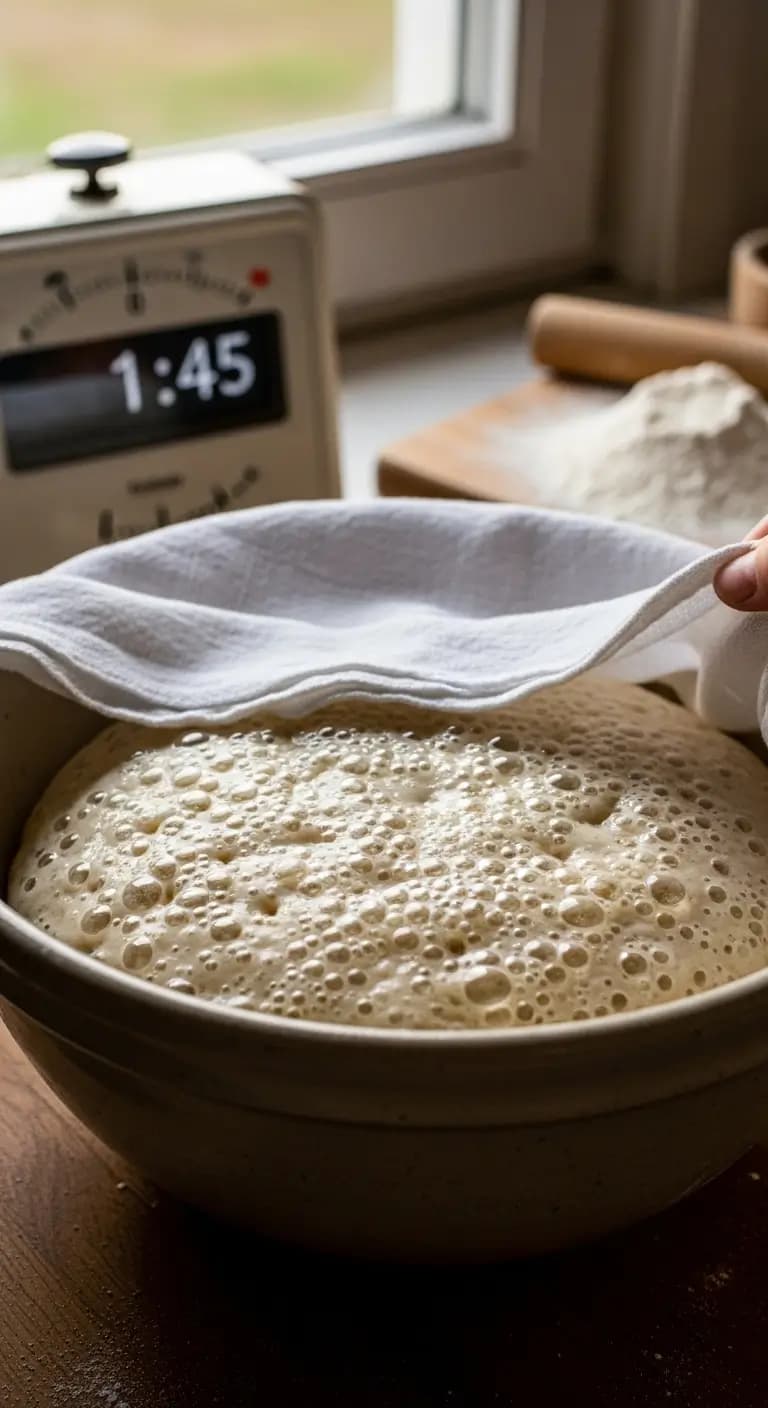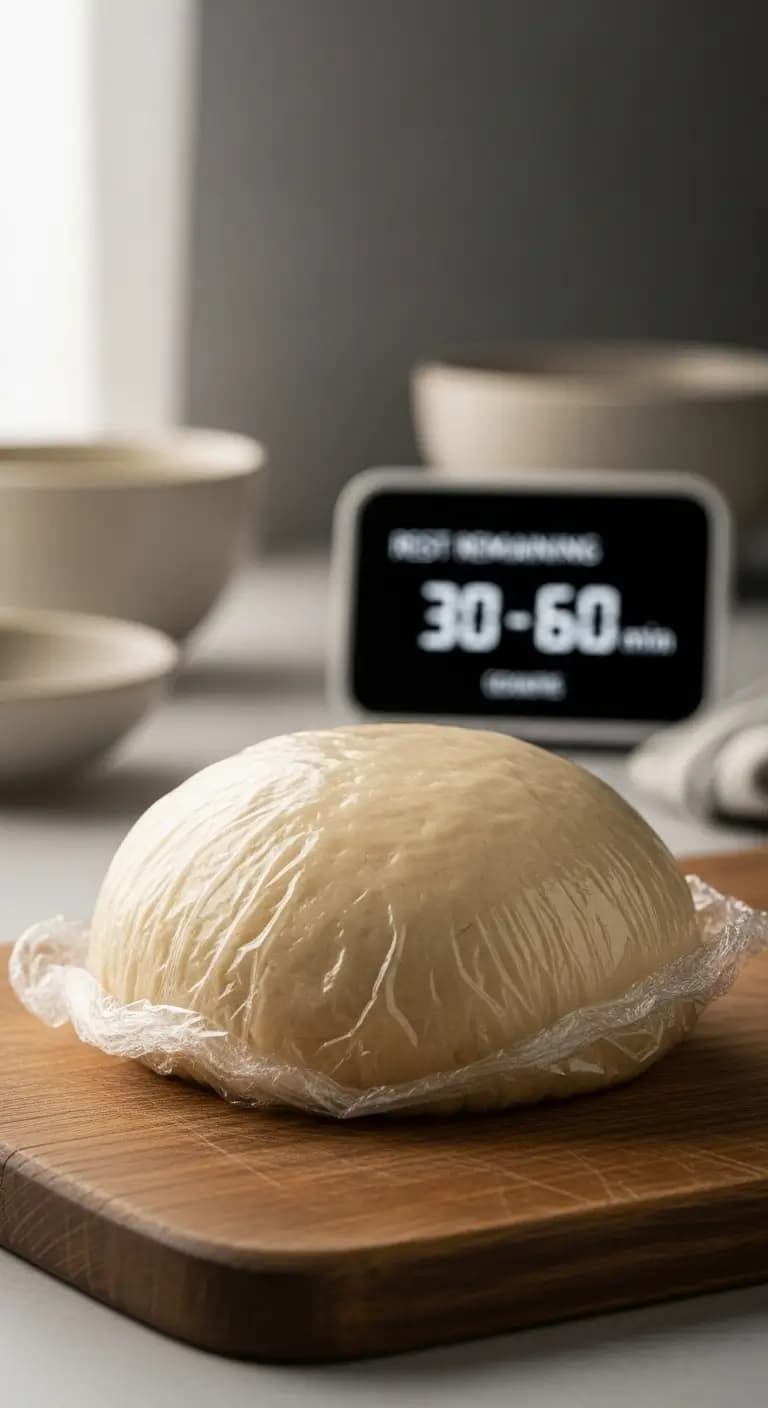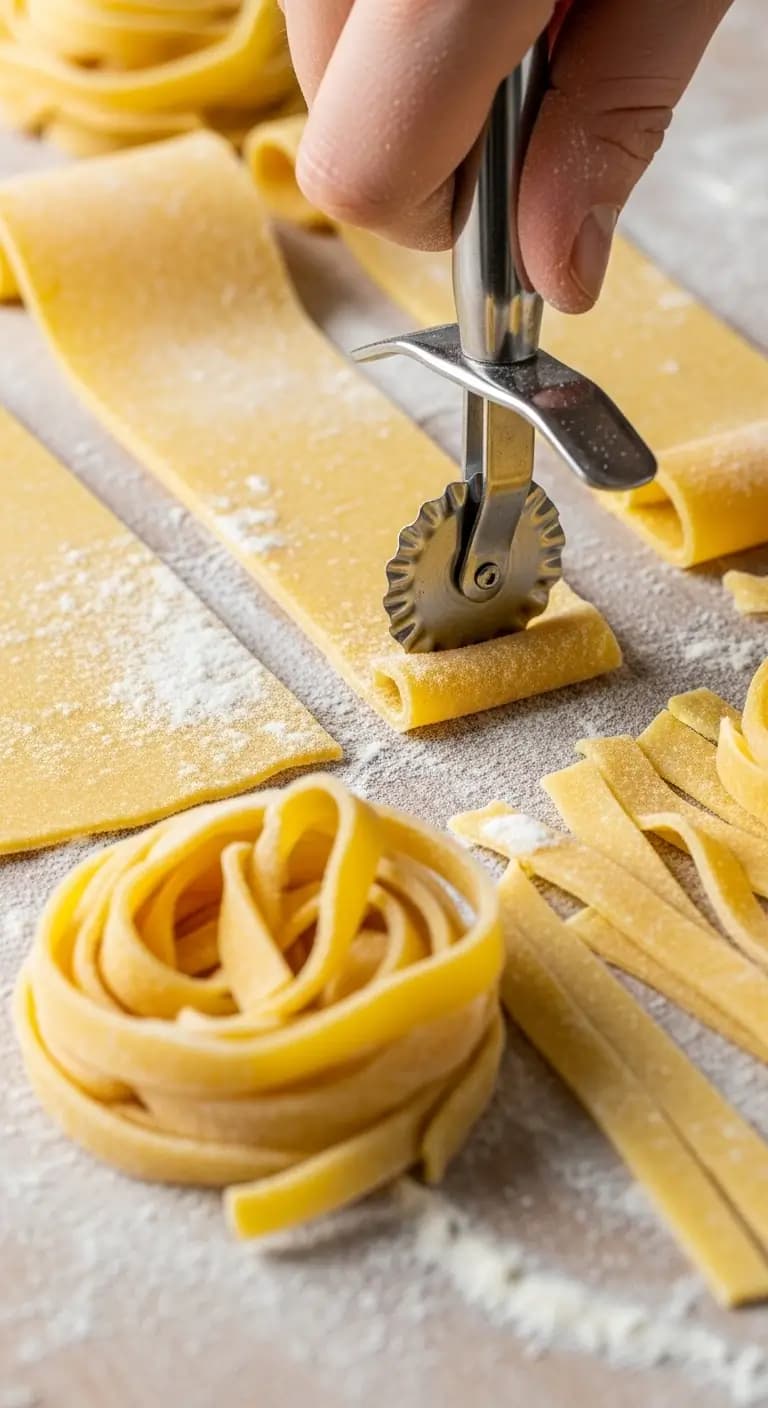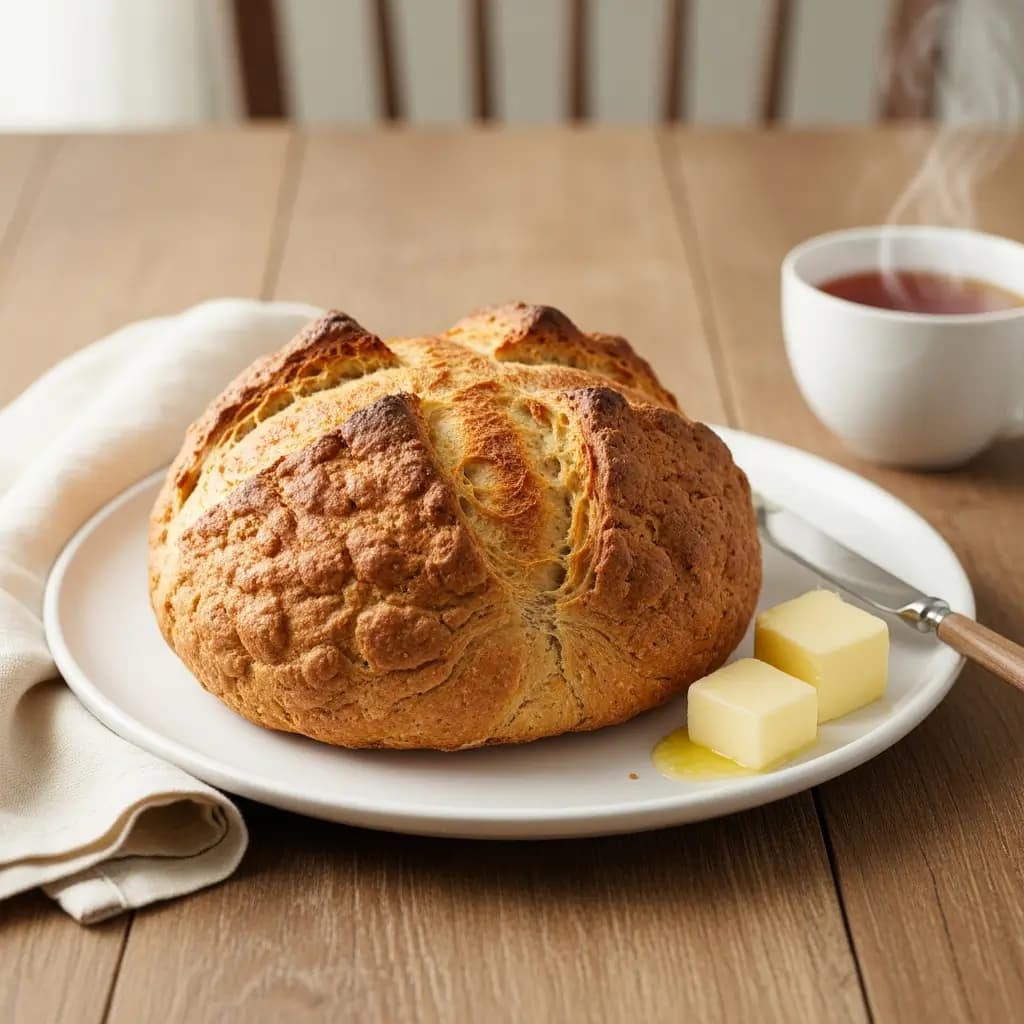Kaslo Sourdough Pasta Recipe (Authentic Fermented Pasta Guide)
Updated on November 11, 2025
This post may contain affiliate links.
Jump to a Section:
Introduction: What is Kaslo Sourdough Pasta
When I first discovered Kaslo Sourdough pasta, I was intrigued by the concept of truly fermented pasta—not just pasta made with sourdough discard, but pasta dough that undergoes actual fermentation. This traditional method, popularized by Kaslo Sourdough bakery in British Columbia, creates pasta with exceptional digestibility, complex flavor, and nutritional benefits far beyond regular fresh pasta.
If you’re searching for an authentic Kaslo Sourdough pasta recipe, you’ve found the complete guide. This method creates pasta with incredible depth of flavor from proper fermentation, enhanced digestibility through the breakdown of complex starches, superior nutritional profile with increased bioavailability of minerals, and that distinctive sourdough tang that transforms simple dishes into something extraordinary.
The Kaslo method isn’t just about adding sourdough to pasta—it’s about allowing the dough to ferment properly, which fundamentally changes the pasta’s character. This is the pasta recipe for anyone serious about gut health, traditional food preparation, or simply the best-tasting homemade pasta possible.
The Kaslo Sourdough Method Explained
What Makes Kaslo Sourdough Different?
Kaslo Sourdough is a bakery and educational resource founded by Bob and Elaine McClure in Kaslo, British Columbia. They’ve become renowned for their traditional sourdough methods and educational materials that teach proper fermentation techniques.
The Kaslo approach to pasta differs from quick sourdough discard recipes:
True Fermentation: Rather than just adding discard for flavor, Kaslo pasta undergoes 8-24 hours of controlled fermentation. This allows beneficial bacteria and wild yeasts to work their magic.
Active Starter: Kaslo recipes use freshly fed, active sourdough starter at its peak—not old discard. This ensures vigorous fermentation.
Whole Grain Options: Many Kaslo recipes incorporate whole wheat or other whole grains, maximizing the fermentation’s impact on breaking down anti-nutrients.
Traditional Techniques: The method follows time-tested principles of fermentation that have been used for centuries before modern quick-pasta techniques.
Health-Focused: The extended fermentation dramatically improves digestibility and nutrient availability, making it ideal for people with sensitive digestion.
Why Kaslo Sourdough Pasta is Different
The Science Behind Fermented Pasta
Phytate Reduction: Grains contain phytic acid, which binds to minerals and makes them unavailable for absorption. The fermentation process reduces phytic acid by up to 90%, making minerals like iron, zinc, and magnesium more bioavailable.
Gluten Modification: While not gluten-free, the fermentation process partially breaks down gluten proteins, making them easier to digest. Many people with gluten sensitivity (not celiac disease) find fermented pasta gentler.
Probiotic Content: Properly fermented pasta retains some beneficial bacteria, though cooking reduces their numbers. The fermentation byproducts still provide digestive benefits.
Lower Glycemic Response: Fermentation can reduce the glycemic impact of pasta, causing slower blood sugar rises compared to conventional pasta.
Enhanced B Vitamins: Fermentation increases B vitamin content, particularly B12, which is otherwise rare in plant-based foods.
Improved Protein Digestibility: The fermentation process begins breaking down complex proteins into simpler, more digestible forms.
Ingredients for Kaslo Sourdough Pasta
For Fermented Pasta Dough:
- Active Sourdough Starter (200g / 1 cup): Freshly fed, at peak rise (not discard). Use within 4-8 hours of feeding.
- Whole Wheat Flour or All-Purpose Flour (400g / 3¼ cups): Whole wheat provides maximum fermentation benefits
- Water (100ml / scant ½ cup): Filtered or dechlorinated water preferred
- Eggs (2 large, optional): Traditional Kaslo pasta uses eggs, but eggless versions work too
- Sea Salt (2 teaspoons): Added after fermentation to not inhibit beneficial bacteria
- Olive Oil (2 tablespoons): Adds tenderness and prevents drying
Equipment Needed:
- Active sourdough starter (100% hydration)
- Large mixing bowl
- Kitchen scale (essential for accuracy)
- Clean kitchen towel or plastic wrap
- Pasta machine or rolling pin
- Sharp knife or pasta cutter

Step-by-Step Instructions
Step 1: Feed Your Starter (8-12 hours before)
For proper fermentation, you need active, vigorous starter. Feed your starter with equal parts flour and water 8-12 hours before making pasta. Use it when it has doubled in size and is bubbly and active—this is when the fermentation power is strongest.
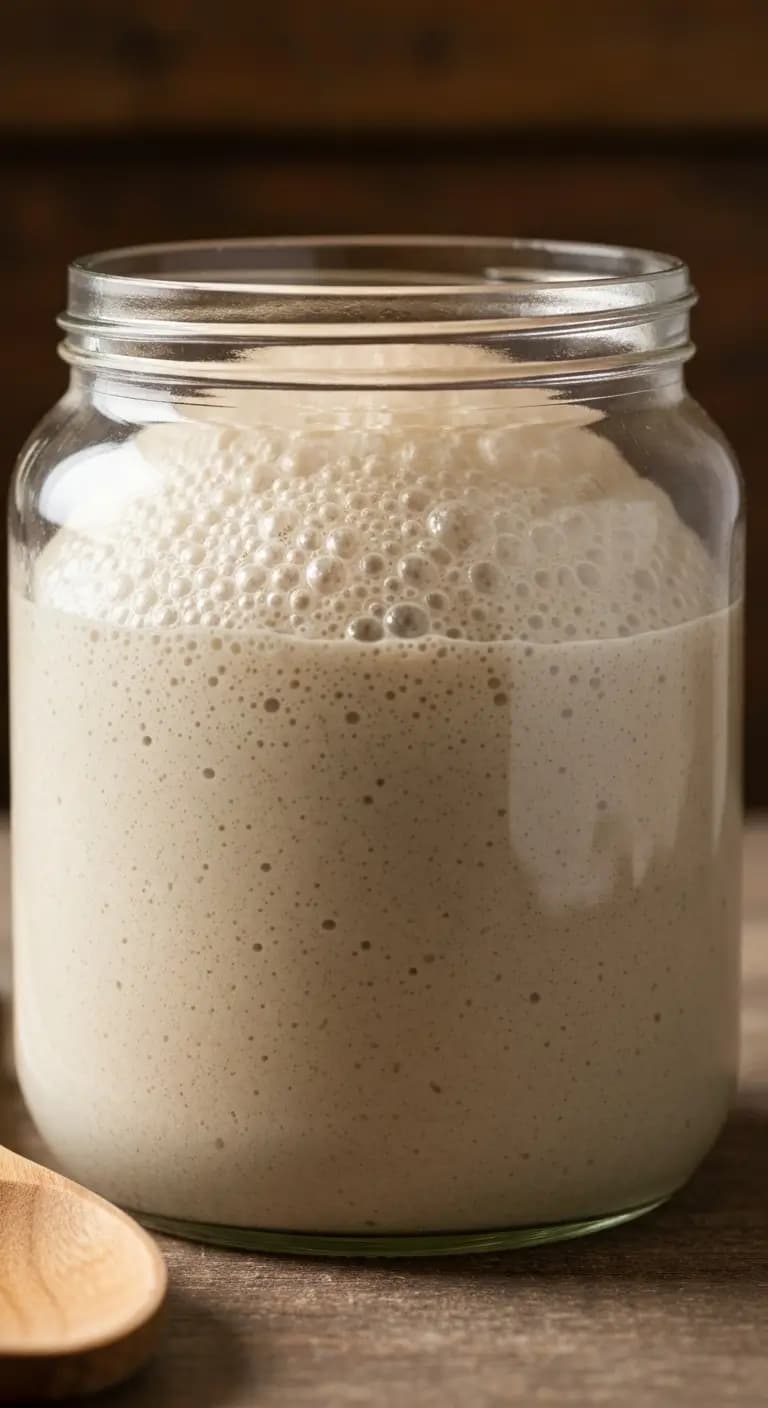
Step 2: Mix Initial Dough (Morning or Evening)
In a large bowl, combine the active sourdough starter, water, and eggs (if using). Whisk until smooth. Add 350g (about 2¾ cups) of flour. Mix with a wooden spoon until a shaggy dough forms. Don’t add all the flour yet—you’ll add more after fermentation.
The dough will be quite wet and sticky at this stage. This is intentional—the higher hydration supports fermentation.

Step 3: Begin Fermentation
Cover the bowl with a damp kitchen towel or plastic wrap. Place in a warm spot (70-75°F / 21-24°C) for 8-12 hours. This is the crucial Kaslo difference—allowing true fermentation to occur.
During this time, the dough will:
- Develop a slightly sour, pleasant aroma
- Become more elastic and stretchy
- Show visible fermentation activity (bubbles on surface)
- Develop complex flavors
Timing Options:
- Overnight: Mix in evening, ferment 10-12 hours, make pasta in morning
- Day fermentation: Mix in morning, ferment 8-10 hours, make pasta in evening
Kaslo Sourdough Pasta Recipe (Authentic Fermented Pasta Guide)
Equipment
- Active sourdough starter (100% hydration), Kitchen scale, Large mixing bowl, Clean kitchen towel or plastic wrap, Pasta machine or rolling pin, Sharp knife or pasta cutter, Thermometer (optional, for monitoring fermentation temperature)
Ingredients
Instructions
- 1
Day 1 (Evening) or Day 1 (Morning):
- 2
Ensure your sourdough starter is freshly fed (4-8 hours prior) and at peak activity—doubled in size, bubbly, and vigorous.
- 3
In large bowl, whisk together active starter, water, and eggs until smooth and well combined.
- 4
Add 350g (2¾ cups) flour. Mix with wooden spoon until shaggy dough forms. Dough will be wet and sticky—this is correct.
- 5
Cover bowl with damp towel or plastic wrap. Place in warm location (70-75°F / 21-24°C) to ferment for 8-12 hours.
- 6
Day 2 (Morning) or Day 1 (Evening):
- 7
After fermentation, dough should smell pleasantly sour, show bubbles on surface, and be more elastic. Add salt and remaining 50g flour.
- 8
Turn onto floured surface and knead 5-7 minutes until smooth and elastic. Dough should be soft and slightly tacky.
- 9
Form into ball, wrap in plastic, rest 30-60 minutes at room temperature.
- 10
Cut dough into 4 pieces. Keep unused portions covered.
- 11
Roll each piece: By machine—start at widest setting, gradually decrease to desired thickness (setting 6-7 for most shapes). By hand—roll as thin as possible with rolling pin.
- 12
Cut into desired shape (fettuccine, pappardelle, ravioli, etc.). Dust generously with flour.
- 13
Cook immediately or dry for storage: Bring large pot of salted water to boil. Cook pasta 3-4 minutes until al dente. Reserve pasta water before draining.
- 14
Toss with your favorite sauce, adding pasta water to help sauce adhere.
Notes
- Use active, freshly fed starter at peak for best fermentation
- Fermentation time: 8-12 hours at 70-75°F is ideal
- For eggless pasta: Replace 2 eggs with ¼ cup water
- Dough will be wet initially—this is correct for fermentation
- Fermented pasta cooks faster than regular fresh pasta (3-4 minutes)
- Freeze unused pasta in nests for up to 3 months
- Store dried fermented pasta at room temperature up to 2 months
The Fermentation Process
Understanding Fermentation Stages
Hours 0-4: Initial fermentation begins. Lactobacilli bacteria start producing lactic acid, creating the characteristic sour flavor.
Hours 4-8: Peak fermentation activity. The dough becomes more elastic and extensible. Phytic acid breakdown accelerates. The aroma develops complexity.
Hours 8-12: Fermentation continues but slows. Flavor becomes more pronounced but not overwhelming. This is the ideal range for pasta.
Beyond 12 hours: Over-fermentation begins. The dough becomes very sour and can break down too much, becoming difficult to work with. Avoid fermenting longer than 16 hours.
Fermentation Variables
Temperature:
- 70-75°F (21-24°C): Ideal range, 8-12 hour fermentation
- 65-70°F (18-21°C): Slower, 12-16 hours needed
- Above 80°F (27°C): Too fast, can over-ferment in 6-8 hours
Starter Strength:
- Very active starter: 8-10 hours
- Moderately active: 10-12 hours
- Weak starter: Not recommended, rebuild first
Hydration Level:
- Higher hydration (wetter dough): Faster fermentation
- Lower hydration: Slower, more controlled fermentation
Shaping and Cooking Kaslo Pasta
Best Shapes for Fermented Pasta
Long Shapes: Fettuccine, tagliatelle, linguine, pappardelle all work beautifully. The fermented dough’s elasticity makes these easy to roll thin and cut cleanly.
Stuffed Pasta: Ravioli and tortellini are excellent because the dough is pliable and seals easily. The tangy flavor complements rich fillings like ricotta or mushroom.
Hand-Cut: Maltagliati (irregular shapes) showcase the artisanal quality of fermented pasta.
Cooking Instructions
- Use abundant salted water (1 tablespoon salt per quart)
- Bring to rolling boil
- Add pasta gently, stir immediately
- Cook 3-4 minutes for fresh, 5-6 for semi-dried
- Taste frequently—fermented pasta cooks faster
- Reserve 1 cup pasta water before draining
- Never rinse—toss immediately with sauce
Sauce Pairings
The tangy, complex flavor of Kaslo pasta pairs especially well with:
- Simple Butter Sauces: Brown butter with sage, garlic butter with herbs
- Cream-Based: Alfredo, carbonara, mushroom cream
- Light Tomato: Fresh tomato with basil, marinara
- Pesto: Basil pesto, arugula pesto, sun-dried tomato pesto
- Olive Oil-Based: Aglio e olio, lemon & olive oil
The fermented pasta’s complexity means it doesn’t need heavy, complicated sauces. Simple preparations often taste best.
Health Benefits of Fermented Pasta
Digestive Benefits
Easier to Digest: The fermentation pre-digests complex starches and proteins, reducing the digestive burden. Many people who experience bloating with regular pasta find fermented pasta gentler.
Reduced Gluten Sensitivity: While not safe for celiac disease, the partial gluten breakdown may help those with non-celiac gluten sensitivity tolerate the pasta better.
Probiotic Effects: Though cooking kills most bacteria, fermentation byproducts and resistant starches feed beneficial gut bacteria.
Less Bloating: Fermentation reduces FODMAP content, which can decrease gas and bloating in sensitive individuals.
Nutritional Advantages
Increased Mineral Absorption: With phytic acid reduced, your body absorbs significantly more iron, zinc, calcium, and magnesium from the pasta.
B Vitamin Boost: Fermentation increases B vitamins, particularly folate and B12 (from bacterial production).
Lower Glycemic Impact: Fermented pasta causes slower, more gradual blood sugar rises compared to regular pasta—beneficial for blood sugar management.
Enhanced Protein Quality: Fermentation makes proteins more bioavailable and easier to digest.
Antioxidant Content: The fermentation process can increase certain antioxidants in whole grain versions.
Storage and Meal Prep
Storing Fermented Pasta
Refrigerator (Fresh):
- Dust heavily with flour
- Store in airtight container
- Use within 2-3 days
- Flavor intensifies slightly with time
Freezer (Best Method):
- Form into nests or portions
- Freeze on baking sheet until solid
- Transfer to freezer bags
- Keeps 3 months
- Cook directly from frozen (add 1-2 minutes)
Drying for Pantry Storage:
- Hang or lay flat until completely dry (24-48 hours)
- Store in airtight containers
- Keeps 1-2 months at room temperature
- Cooking time increases to 6-8 minutes
Make-Ahead Strategy
Weekend Batch Cooking: Make multiple batches on weekends when you have time for the fermentation. Freeze in portion sizes for quick weeknight meals.
Fermentation Scheduling: Start fermentation before bed for morning pasta-making, or start in morning for evening preparation.
Pre-Shaped and Frozen: Having fermented pasta ready in the freezer means you can have “fresh” pasta any night with just 5 minutes of cooking.
More Kaslo Sourdough Recipes
Explore more traditional Kaslo sourdough recipes:
- Sourdough Pizza Crust: Another fermented Italian favorite
- Sourdough Discard Chocolate Chip Cookies: Sweet treats with sourdough
- Same-Day Sourdough Discard Pumpkin Bread: Quick fermented bread
Learn more about Kaslo Sourdough: Visit the official Kaslo Sourdough website for educational resources, books, and traditional sourdough techniques. Their “Sourdough: Culture, Care & Cooking” book is the definitive guide to traditional sourdough methods.
Explore our collection: Browse all sourdough discard recipes and sourdough pizza recipes for more fermented food inspiration!

